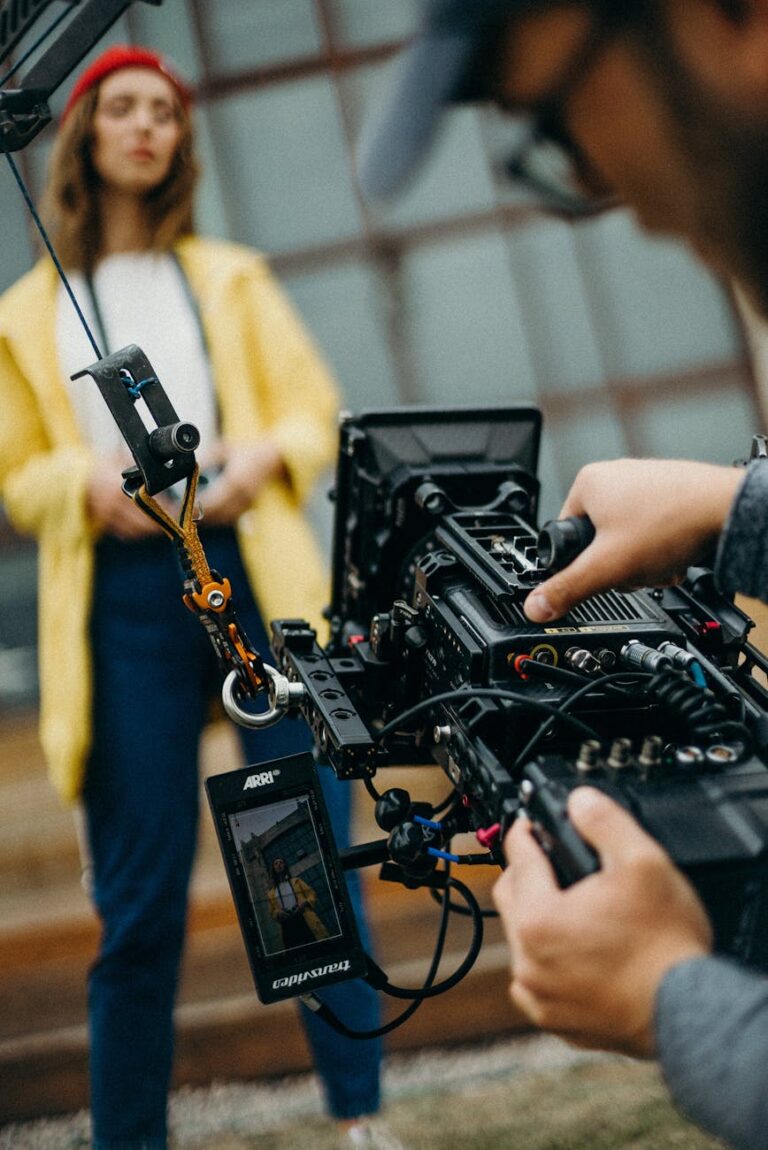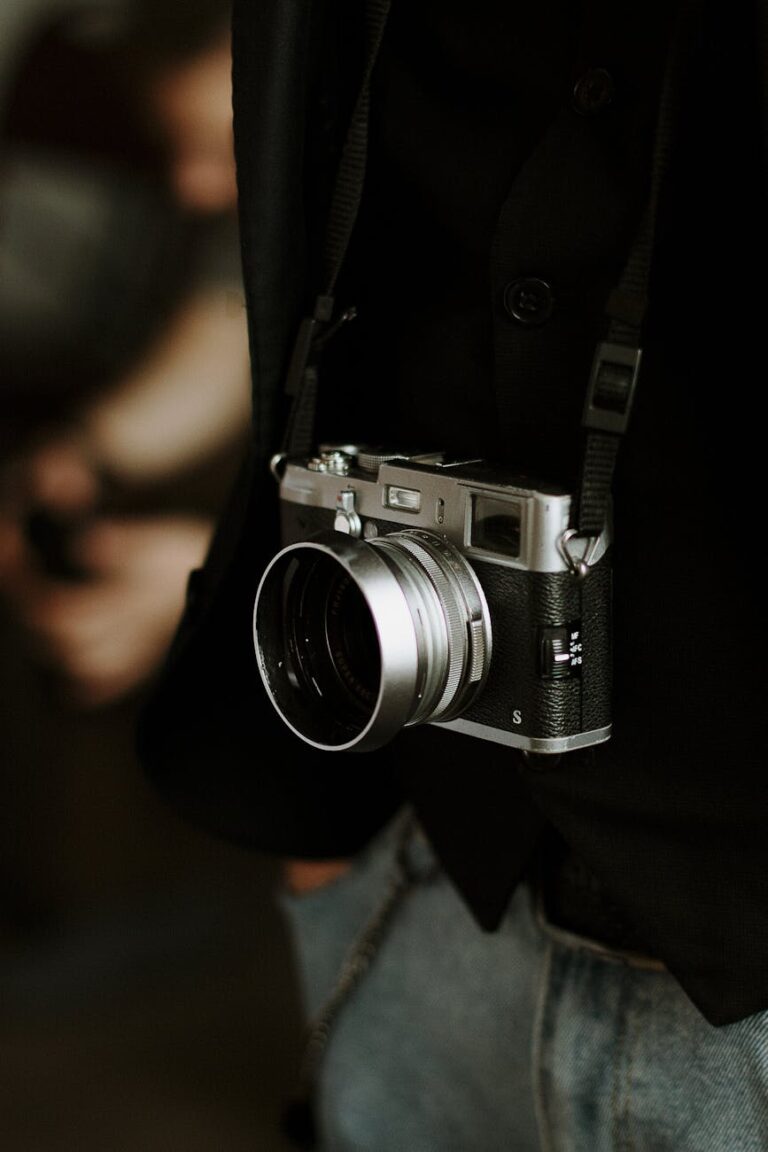Dust, Smudges, and Stains, Begone! Camera Lens Cleaning Kit Guide

Photo by Allef Vinicius on Unsplash
Essential Camera Lens Cleaning Tools
To maintain the clarity and longevity of camera lenses, employing the right cleaning tools is essential. A quality camera lens cleaning kit is a crucial investment for any photographer, whether amateur or professional, and should contain a few key items to effectively combat dust, smudges, and stains.
Microfiber Cloths and Wipes
A top-tier camera lens cleaning kit will always include microfiber cloths and wipes. These cloths are indispensable for gently removing dirt, dust, and oily stains from the lens surface without the risk of scratching. A microfiber cloth’s fine fibers are designed to pick up and hold onto particles, making them ideal for both wet and dry cleaning methods. They should be reserved solely for lens care and washed with care to prevent contamination. Adorama provides insight into the importance of a high-quality microfiber cloth in a camera lens cleaning kit.
Lens Cleaning Pens and Brushes
Another essential component of a camera lens cleaning kit is the lens cleaning pen. Equipped with a soft cleaning tip on one end and a retractable brush on the other, a lens cleaning pen like the LensPen NLP-1, priced at £13, is designed to effectively remove fingerprints and tough stains without leaving behind streaks or residue. The retractable brush is perfect for dusting off loose particles before moving on to more thorough cleaning methods. Wedio highlights the LensPen NLP-1 as a valued part of their kit offering.
In addition to the pen, a high-quality lens brush is a gentle tool to sweep away dust without touching the lens with potentially oily fingers. Combined, these tools provide a comprehensive approach to cleaning that addresses various types of contaminants that may affect image quality.
To learn more about the best ways to clean camera lenses or for further advice on cleaning DSLR lenses, you can explore our detailed guides and recommendations. Remember, the right tools not only help in maintaining the lens’s performance but also extend its lifespan by preventing scratches and other damage.
Choosing the Right Cleaning Solutions
When selecting a cleaning solution for camera lenses, photographers must consider formulas that are both effective and safe for the delicate coatings found on optical surfaces. The correct solution can make all the difference in preserving the quality and longevity of the lens.
Alcohol-Free Lens Cleaners
Alcohol-free lens cleaners are a vital component of any camera lens cleaning kit. These solutions are specifically designed for optical surfaces and are adept at tackling smudges, fingerprints, and challenging stains without leaving streaks or residue. Since they do not contain alcohol, they are less likely to damage the special coatings on camera lenses.
Before using any cleaning solutions, it’s advisable to consult the manufacturer’s recommendations, especially since some cleaning methods, such as those involving isopropyl alcohol, may harm lens coatings (Epidemic Sound). For more information on the best way to clean camera lens, including when to opt for dry or wet cleaning methods, visit the linked resource.
Gentle and Non-Abrasive Formulas
The ideal cleaning solution for camera lenses should be gentle, non-abrasive, and safe for all lens coatings. Such formulas are efficient, evaporate quickly, and leave no residue, ensuring a smooth and spotless finish on the lens surface (UES Products). When used in conjunction with soft, disposable wipes like Kimwipes or lens-cleaning paper from brands such as Tiffen, these solutions can provide a thorough and safe cleaning experience (Epidemic Sound).
For detailed steps on the cleaning process, including the proper use of solutions and wipes, readers can explore guidance on cleaning DSLR lens techniques. It’s always recommended to avoid abrasive materials or harsh chemicals that could scratch or degrade the lens. In cases where alcohol-based cleaners might be necessary, articles discussing cleaning camera lens with alcohol can offer insights into their safe usage.
By choosing the right cleaning solutions, photographers can maintain the pristine condition of their lenses and ensure that every shot is as clear as the last.
Proper Techniques for Cleaning Lenses
Ensuring your camera lenses are free of dust, smudges, and stains is crucial for capturing clear images. Utilizing a camera lens cleaning kit correctly is paramount. Here, we’ll explore both dry and wet cleaning methods to maintain your lenses effectively.
Dry Cleaning Methods
Dry cleaning should be the initial approach when cleaning camera lenses, as it’s less invasive and presents minimal risk of damage. The following are key tools and methods for dry cleaning:
- Air Blower Cleaner: A manual pump that directs a stream of air to remove dust particles. Different sizes are available, with larger blowers offering more power. This tool is particularly useful for removing debris from hard-to-reach areas and should be used before any contact is made with the lens surface.
- Lens Cleaning Pens and Brushes: These tools are designed to gently dislodge dry contaminants without scratching the lens. A lens cleaning pen often includes a soft brush on one end and a non-liquid cleaning element on the other, suitable for lifting away oily fingerprints.
- Microfiber Cloths: High-quality microfiber cloths are indispensable for dry cleaning. They can attract dust and absorb oil without leaving residue or scratches. Ensure that the cloth is clean and free of debris before use, and reserve it exclusively for lens cleaning to prevent cross-contamination (Adorama).
Wet Cleaning Methods
When stubborn residues like oil or dried water spots are present, wet cleaning may be necessary. Use the following guidelines and solutions for an effective wet clean:
- Alcohol-Free Lens Cleaners: Opt for professional optical cleaning solutions that are safe for lens coatings and designed to dissolve grime without damaging the glass. These solutions should be used sparingly to avoid excess liquid, which could potentially seep into the lens body.
- Applying Solution: Apply the cleaning solution to a microfiber cloth or lens tissue, not directly onto the lens. This prevents the risk of liquid entering the lens. Gently wipe the lens in a circular motion, starting from the center and moving outward to the edges.
- Drying the Lens: After using a wet cleaning method, ensure all liquid is removed by using a dry section of the microfiber cloth. Leaving any moisture on the lens could lead to watermarks or potential damage.
By following these proper techniques, photographers can maintain their lenses and ensure longevity. For more detailed guidance, visit our in-depth tutorials on how to clean camera lens and discover the best way to clean camera lens. Additionally, for information on how to handle your DSLR lenses, check out our dedicated section on cleaning dslr lens. Remember that while alcohol can be used in certain cleaning scenarios, it’s important to review our advice on cleaning camera lens with alcohol before proceeding.
Maintenance and Care Tips
To ensure the longevity and optimal performance of camera lenses, maintenance and care should be a staple in every photographer’s routine. Proper upkeep not only maintains image quality but also safeguards the lens from potential damage.
Frequency of Lens Cleaning
The frequency of lens cleaning is a topic of debate among photographers. An established photographer, with around 50 years of experience, suggests that lenses rarely require cleaning and advises against frequent cleaning to prevent dirt accumulation. Instead, they recommend using a cotton handkerchief for light dusting, raindrops, or fingerprints (Quora).
It is generally recommended to clean camera lenses between two to four times a year, especially if they are used regularly. The key is to clean the lens only when necessary to minimize the risk of damaging the sensitive coatings (Epidemic Sound). For further guidance on when and how to clean camera lenses, refer to how to clean camera lens.
| Usage Level | Recommended Cleaning Frequency |
|---|---|
| Light Usage | Once a year |
| Regular Usage | 2 – 4 times a year |
| Heavy Usage | As needed, with caution |
Avoiding Damage and Scratches
To avoid damaging or scratching the lens, it is crucial to first remove all dust using a brush before applying any liquid cleaning solution. This helps prevent abrasive particles from scratching the lens coating during the wiping process. Fingerprints, which can potentially etch the lens coating due to their acidity, should be cleaned off promptly. For safe cleaning, use pure water or a very mild cleaning fluid, as recommended by photography experts on DPReview.
Here are some key points to remember to prevent damage:
- Always use a soft brush or air blower to remove dust particles before any wet cleaning.
- Apply cleaning solutions sparingly and avoid alcohol-based cleaners unless necessary.
- Use a gentle, side-to-side motion when wiping the lens with a microfiber cloth.
- Refrain from overcleaning, as excessive contact can wear down the lens coatings.
For the best way to clean camera lens and specific techniques, including cleaning DSLR lens procedures, it’s essential to consult resources that provide detailed instructions on maintaining the pristine condition of camera lenses. Remember, the goal is to keep the lens clean for the best image quality while avoiding any practices that could lead to scratches or other forms of damage.


